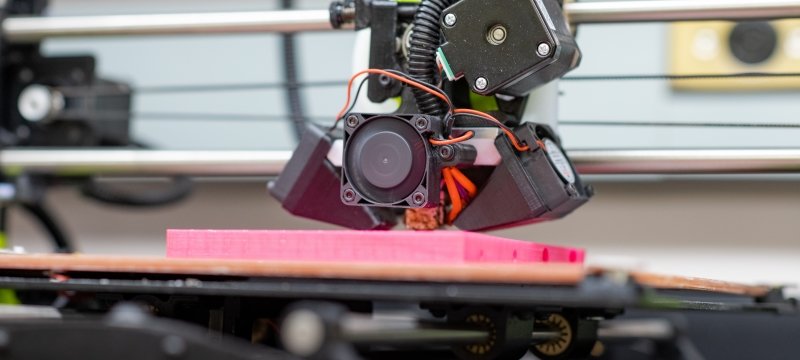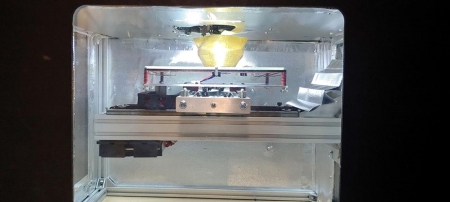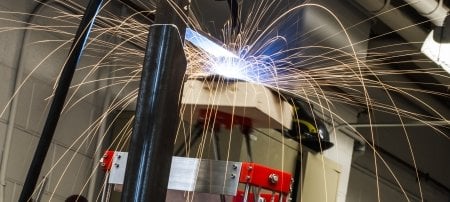HardwareX has an open call for papers to build an open-source, 3D-printed ventilator and other COVID-19 medical hardware. They need ideas, printers, medical experts and a synthetic lung.
As COVID-19 continues to spread, the research community is looking for solutions. In addition to work on vaccines and medicine, medical technology is needed. In severe cases of COVID-19, the disease attacks the respiratory system, and one of the major bottlenecks in treatment is having enough ventilators.
The open-source hardware community wants to change that.
Joshua Pearce, Richard Witte Endowed Professor of Materials Science and Engineering and a professor of electrical and computer engineering, is an open-source hardware expert and co-editor-in-chief of HardwareX, the leading open-source scientific hardware journal.
“The research on open-source ventilators is not new, but when it started a decade ago the technology was not there. Now it is, and we have substantial motivation, and we just need to bring all the information together,” Pearce said, explaining that 3D-printed lab hardware and other open-source tech can be cost-effective and encourages design improvement. “Even complex medical devices are not outside the realm of possibility anymore.”
Elsevier’s HardwareX
Submit to the special issue on open-source COVID19 medical hardware.
Pearce, who runs the Michigan Tech Open Sustainability Technology (MOST) Lab, has joined the Michigan Tech Open Source Initiative, which collaborates with groups like the 9,000+ strong Helpful Engineers, made up of makers, hackers, medical personnel, engineers and other researchers from around the world. Many perspectives converge on a single goal: getting 3D-printed, open-source ventilators and other medical hardware where they’re needed to overcome COVID-19.
However, technological expertise is not the same as medical expertise (and a key validation test for open-source ventilators requires a lab with a synthetic lung — not something most people keep around their makerspace). The end goal is medical-grade, low-cost designs, which can be made using distributed manufacturing technologies, like 3D printing or circuit milling systems, by anyone who needs them locally. To use them, the medical community needs certainty that an open-source design will operate as intended and do no harm.
As the HardwareX editors write in their announcement, “This special issue is dedicated to vetting the technical specifications and reproducibility of open medical hardware that can help during this global pandemic.”
They also note that, due to the urgency, Elsevier has made HardwareX platinum open access for the special issue, meaning all articles will be rapidly peer-reviewed and published open access upon acceptance, and all article processing charges will be waived. Or, as Pearce puts it for open hardware, “We need to test it, vet it and send it out to the universe.”
The work is not clear or easy. Besides prioritizing remote work and social distancing like much of the working world, another limitation to combating COVID-19 is access to hardware. This includes ventilators, negative pressure rooms (airborne infection isolation rooms), oxygen concentrators, pulse oximeters, flow-splitters for oxygen supplies, flowmeters, nasal prongs/nasal cannulae, flexible nasal catheters, oxygen masks, non-contact thermometers, N95 respirators and powered, air-purifying respirators.
Even with uncertainty about whether manufacturing companies are willing to let open-source help out,there is immense pressure to get a design put together — and fast. As pointed out by the editor-in-chief of Science, the success of the world’s recovery depends on what the research community is able to understand, mitigate and implement.
The technology enabling many of us to work at home is the same technology connecting the global open-source community. Their conversations are happening in Slack, on Facebook and through many, many emails. Lots of opportunities to get involved exist.
Michigan Technological University is an R1 public research university founded in 1885 in Houghton, and is home to nearly 7,500 students from more than 60 countries around the world. Consistently ranked among the best universities in the country for return on investment, Michigan's flagship technological university offers more than 185 undergraduate and graduate degree programs in science and technology, engineering, computing, forestry, business, health professions, humanities, mathematics, social sciences, and the arts. The rural campus is situated just miles from Lake Superior in Michigan's Upper Peninsula, offering year-round opportunities for outdoor adventure.







Comments